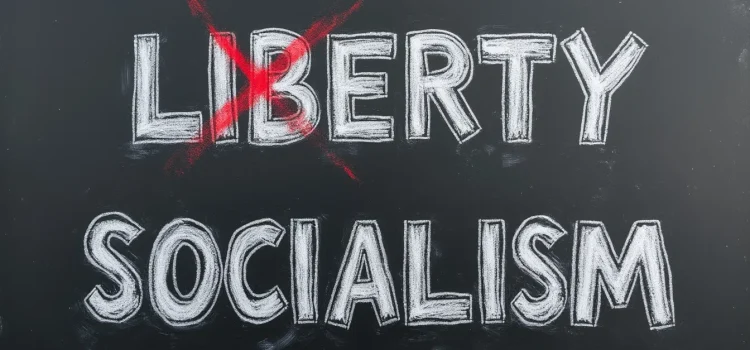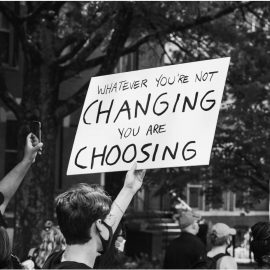
Why would people embrace socialist ideals? How did European societies shift from celebrating liberalism to questioning its effectiveness?
In The Road to Serfdom, Friedrich Hayek explores the rise of socialism through two key factors: a fundamental change in how people understood liberty and growing dissatisfaction with liberal economic policies. His analysis reveals how socialist ideas gained momentum by promising solutions to economic hardships and wealth inequality.
Keep reading to discover how the transformation of political ideals and economic perspectives shaped one of the most significant ideological shifts in modern history.
The Rise of Socialism
Hayek observes that socialism conflicted with Western Europe’s long-standing liberal values, such as protecting individual rights and limiting government power; yet socialists successfully established their ideas in society. He discusses the rise of socialism, explaining that notions of central planning took hold in British and American societies during World War II. Governments leveraged centralized power to organize their countries’ economies as part of the war effort. As they began to plan for life after the war, they considered maintaining that centralization to rebuild the economy and address social inequalities.
(Shortform note: Western societies’ embrace of socialism during and after World War II is an example of Keynesian economic theory, which advocates for government intervention to stabilize the economy and stimulate growth. Economist John Maynard Keynes proposed that government spending could reduce unemployment and stimulate recovery during crises like war or recession. For instance, during World War II, the US ran a centrally planned economy in which the federal government controlled resources and directed investments.)
Hayek argues that two factors led to the rise of socialism: the redefinition of liberty and the fading of liberalist ideals.
Factor #1: The Redefinition of Liberty
In liberalism, liberty stands for freedom from oppression—but proponents of socialism redefined it as freedom from economic hardship. Hayek explains that they promised to liberate people from economic oppression by reducing wealth disparities. This redefinition allowed socialists to find common ground with liberals—without liberals noticing the change in the meaning of liberty.
(Shortform note: Some argue that liberalism and socialism view liberty as negative and positive freedom, respectively. Liberals define liberty as negative freedom, meaning it’s the absence of constraints or oppression. They believe you’re free when you can do what you want without restrictions, such as excessive government regulations. However, socialists see liberty as positive freedom—the ability to control your life and achieve your goals. They argue that economic equality can give people control over their lives, thereby ensuring their freedom.)
Factor #2: The Fading of Liberal Ideals
Hayek adds that Europeans started overlooking the benefits of liberalism, focusing instead on its flaws. He notes that European societies flourished under liberalism: It freed people from traditional social and economic norms, allowing them to choose their occupations and create sources of income. This sparked economic growth and scientific advancements. However, as societies evolved, their tolerance for inequalities diminished, and they questioned why many people were still struggling despite economic and scientific progress.
(Shortform note: Europeans may have focused on the flaws of liberalism due to negativity bias. This bias leads people to give greater weight to negative experiences and outcomes (such as inequalities) while overlooking the positive aspects of a system (like increased opportunities and economic growth). As a result of this bias, the adverse impacts of liberalism may have overshadowed its successes, fostering criticism despite the overall progress liberal policies achieved.)
According to Hayek, critics of liberalism pointed to its laissez-faire approach as the culprit of those inequalities. They argued that laissez-faire contributes to societal inequalities by relying on market forces to resolve economic issues. They claimed this hands-off strategy exacerbates wealth disparities, as unregulated markets favor the rich.
(Shortform note: Laissez-faire is an economic doctrine that advocates for minimal government intervention in economic affairs, asserting that free markets should operate without regulatory constraints. This approach, whose name is derived from a French phrase meaning “let do,” relies on the belief that individual freedoms in economic activities lead to optimal outcomes for society as a whole. Advocates of laissez-faire oppose policies such as government-imposed price limits and support policies like reducing overall governmental oversight and doing away with trade restrictions like tariffs.)
Hayek notes that socialist critics of liberalism advocate for abandoning laissez-faire and creating government monopolies to promote economic equality. They believe state control over key industries allows for fairer resource allocation and ensures essential goods and services are distributed equitably. By advocating for these monopolies, socialists aim to address disparities directly rather than letting market dynamics reinforce existing inequalities.
Hayek disagrees with this socialist prescription for fixing inequality. According to him, improving the economy requires adhering to the liberalist principle of competition rather than discarding it entirely. He agrees that laissez-faire policies can leave people vulnerable to economic forces, but he prefers a different solution. He argues that strict adherence to laissez-faire policies is problematic only when it prevents governments from protecting competition—the driving force behind liberal economies and their subsequent progress.
| Socialism Versus Liberalism: Two Contrasting Approaches to Societal Inequality Some scholars argue that socialism and liberalism share a concern about societal inequalities, despite their methods being fundamentally opposed. Socialism seeks to redistribute resources equitably through government ownership, while liberalism advocates for minimal state intervention, believing free markets will naturally correct inequalities. This contrast underscores a core tension: liberalism emphasizes individual initiative and market competition, whereas socialism focuses on collective action and state responsibility. Part of the difficulty of deciding between liberal and socialist approaches is that both have significant disadvantages. With socialism, government monopolies risk inefficiency and stagnation, as the lack of competition can stifle innovation and lead to government workers’ complacency about the quality of services they provide. Conversely, liberalism may undermine stability in essential services. Without government oversight, the market can prioritize profit over public welfare, exacerbating poverty and inequalities. Perhaps the answer lies in a mixed approach. Although liberalism and socialism still conflict over issues like individualism and wealth accumulation, some modern-day socialists argue that both ideologies can strengthen each other. For example, liberalism contributes a focus on individual rights to socialism, while socialism contributes an emphasis on the dangers of wealth concentration. |






